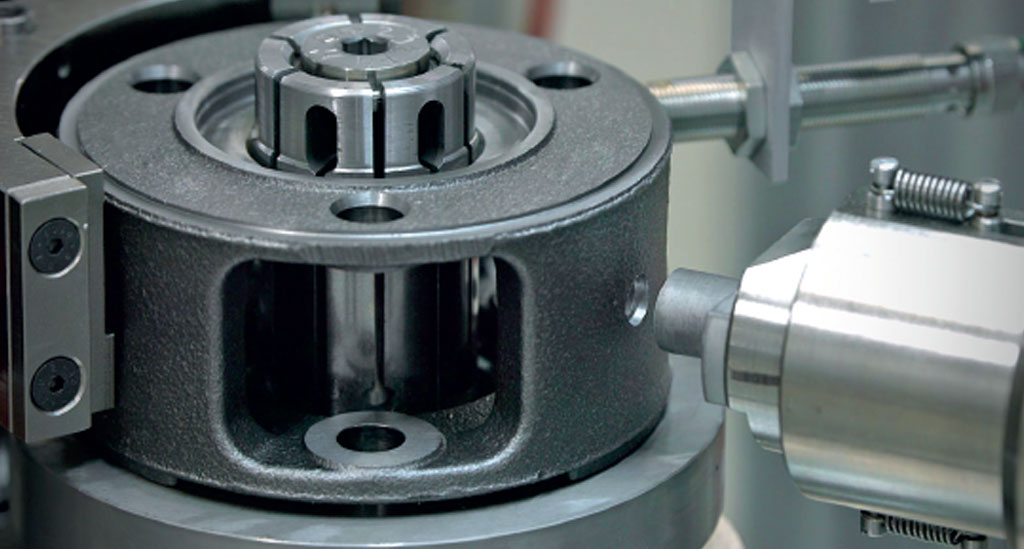A cutting-edge automatic balancing machine reduces noise, vibration and harshness by removing weight from complex internal rotating components
The automotive transmission industry is rapidly evolving. Thanks to the latest mainstream solutions, including CVT and dual clutch technologies, automatic vehicles are now far more efficient and often quicker than manual versions. Vehicle electrification trends also create a pressing need for new transmissions designs.
This re-engineering is aimed at installing an e-motor somewhere along the powertrain. As a positive consequence of innovation within the transmission industry, today’s automatic cars are a more attractive option than they were one decade or more ago – even for countries where typically the conventional gearstick covered the vast majority of vehicles.
This scenario creates new issues that vehicle engineers need to address; part balancing is one of these.
Francesco William D’Alessandro, manager of automatic balancing machine manufacturer Balance Systems Group, has 18 years of experience serving the automotive industry with industrial machinery and has opened up about the industry’s electric transition.
It is well known that mass unbalance generates noise and vibration, which is a crucial factor in the driveability of powertrains. Low residual unbalance improves both NVH and dependability of vehicles, and auto makers are aware of this benefit.
Transmission layout must also be as compact, and with this aim, the shape of the internal rotating components are often complex. These parts are typically balanced by removing weight through milling or drilling and variable surfaces, such as tapered and wavy, which are unfavorable factors for accurate material removal.
“We believe that mechanical design engineers have to express their creativity in order to reach higher performance. The key takeaway for this scenario is in the touch-detection system between the cutter and the workpiece,” says D’Alessandro.
“We have our own proprietary solution thanks to experience in process control systems for grinding machines, where it is crucial to detect the exact moment when the grinding wheel touches the workpiece or the diamond dresser. In this field, there is a huge demand for these kinds of features and this knowhow has been merged into our balancing machines.”
Unique solutions can really open new possibilities and are often a big advantage over the competition, but sometimes it might be difficult to let the customer know the real benefit behind a complicated feature.
“Actually, we detect the contact point between the cutting tool and the workpiece,” adds D’Alessandro. “In contrast to what our competition does, the touch detection is done for every part and only after that we determine the trajectory of the cutter, in the case of milling, or the hole depth in the case of drilling.”
The balancing operation is connected to lean manufacturing, which also means optimizing the manufacturing processes upstream or downstream, while keeping the same quality standards. However, in the real manufacturing world, engineers are constantly faced with multiple unpredictable variables including geometric tolerance of the parts, wear of the cutting tools, and operators’ mistakes. These factors cannot be eliminated and could negatively affect the final residual unbalance.
“A planetary gear carrier used in an automotive transmission is balanced by removing material through drilling, but because of its shape, the semi-finished part is made out of die-casting, which is characterized by moderate dimensional precision,” explains D’Alessandro, who is responsible for both North American and UK markets at Balance Systems Group.
“Additionally, how does the drill length look after 1,000 holes? The main benefit of the touch-detection system is that it doesn’t matter how large your part tolerance is, or how fast your tool wear is. Our system takes care of it by automatically compensating these two variables, on each part, guaranteeing high accuracy and efficiency along the manufacturing batches. Thanks to this, our balancing machine can have up to 99% unbalance reduction ratio and a process capability of more than 1.66.
“The sales of automatic cars have increased all over the world with the introduction of the latest transmission technology on the market,” he continues. “With the rising popularity of affordable solutions, currently there are more units running on the roads than in the past. However, today’s automotive transmissions can be very complex and their overall performance is a result of small details. Through the years, we have seen many warranty recalls because of the failures of fairly insignificant parts, which are often due to mismatching between the design requirements and the manufacturing goals.
“For many reasons, this is going to be a challenging period for Tier 1 suppliers and OEMs. I would say that nowadays engineers have free rein to reach their goals, and Balance Systems is one of the companies that can help ensure manufacturing goals are met.”


